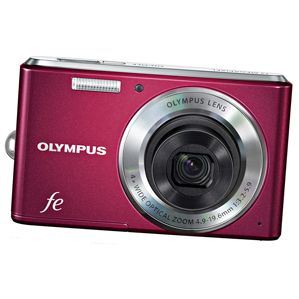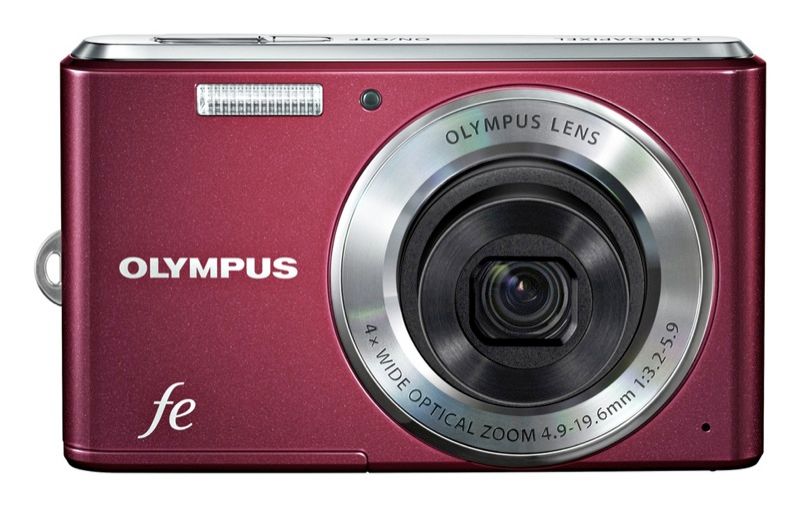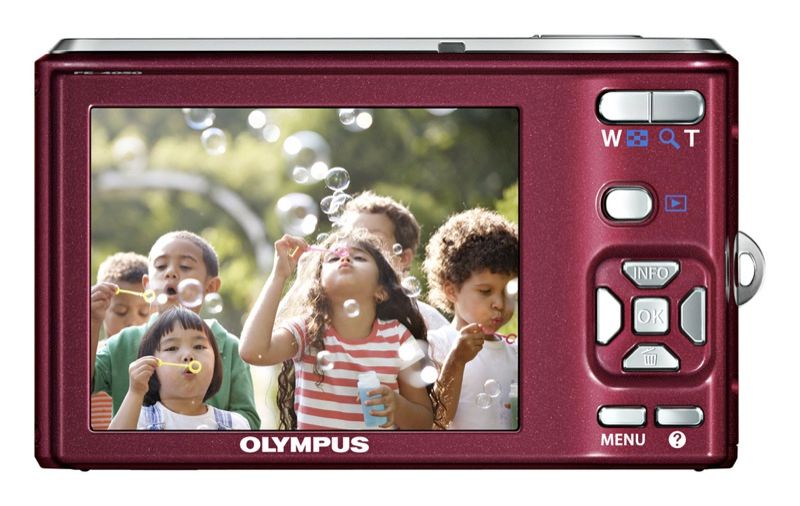Can you pick up a reasonable digital compact for less than £100, if only by a penny? Past experience has suggested not. So will the Olympus FE-4050 be the camera to force us to re-examine our prejudices and take a good, long hard look at ourselves?
Our quick take
Ultimately the FE-4050 is a slightly pared down version of the FE-5050, but we found the marginally wider body helped maintain a stronger grip, so camera shake was less problematic for us over our test period. Though image quality was still a little softer than we would have liked overall, this has of course to be put into the context of a camera that costs less than £100. Given the pocket-money price, one can almost forgive the fact that the FE-4050 is a bit of a toy - and one that might find a more appreciative audience in the younger members of the family. So to answer our original question, can you pick up a decent digital camera for under £100? Almost.

Olympus FE-4050 - 3.5 / 5
| FOR | AGAINST |
|---|---|
|
|
For starters the Olympus FE-4050 is £30 cheaper than its FE-5050 bigger brother. So what do we lose and what do we gain? Well the FE-4050 is marginally wider in depth (at 19.9mm rather than 18.8mm) with a slightly more plastic-y feel. Resolution has also dropped from 14 effective megapixels to 12. But here’s the upshot: fewer pixels on the same sized chip (a 1/2.3-inch CCD sensor) isn’t always a bad thing in avoiding nasties like image noise/grain, as experience has also taught us.
Plus, we’re given a 4x rather than 5x optical zoom, here equivalent to 27-108mm in 35mm terms, which retracts within the body when not in use to maintain slender dimensions. The camera measures 91.7 x 56 x 19.9mm, so roughly the height and width of a credit card, and weighs a lightweight 112g with rechargeable lithium ion battery and SD or SDHC media card inserted.
Incidentally, the battery is again charged with the aid of USB equipped mains plug, which necessitates the battery being charged within the camera itself. The build of the FE-4050 feels sturdy despite the plastic construction and toy-like controls at the rear that in their shiny plasticity recall something plucked from a Christmas cracker.
It’s available in a range of colours including silver, black, red or white, but we still don’t get anything approaching even a hint of a grip for steadying the camera when shooting handheld, just a slightly slippery surface. Video clip resolution remains at a modest 640 x 480 pixels at 30 frames per second and the optical zoom is again disabled once the recording of clips has commenced.
With the camera powering up from cold in around 2 seconds, rear screen blinking into life and lens extending to maximum wide angle setting with an audible buzz, more positively it retains the six Magic Filters digital effects that are an option among the shooting modes. Here, again, shooting modes aren’t given a clearly labelled button - or the more familiar dial - but are instead summoned with a press of the “OK” button on the FE-4050’s backplate, a less obvious choice which isn’t very helpful for the beginner market at which this camera is pitched.
The filters, applied at the time an image is captured, include the new soft focus and Punk options, the latter reproducing a crude photocopied look, with heavy blacks and a garish pink/purple backdrop that wouldn’t have looked out of place on a Jamie Reid Sex Pistols poster (we’re fans by the way). Joining them are Fish Eye, Pop Art, Sketch, and Pin Hole. All are fun additions, though the effectiveness of their application is largely trial and error on the part of the photographer. Full resolution JPEGs are committed to memory in around 3-4 seconds.
The camera’s default setting is i-Auto, for snapshot operation, with Program Auto, digital image stabilisation mode, scene mode with 14 settings for common subjects, panorama and movie being further options, selected from a toolbar on the right-hand side of the camera’s 2.7-inch LCD, utilised for shot composition and review. That much is simple enough once you’ve tracked down the shooting modes in the first place.
In terms of image quality, the colours produced by the Olympus on its standard default setting - as opposed to the garish Pop Art - were subdued rather than well saturated, and on dull days this can result in your shots looking a little muddy in appearance. Pixel fringing is also present in areas of high contrast, we lose some definition towards the edges of the frame when shooting at maximum wide angle and pictures generally lack a well-defined crispness. This is a snapshot camera that very much takes snaps and anyone hoping for a winning image to hang above the mantelpiece would be advised to spend a little more on a camera with a better lens. We did, however, feel the FE-4050 had the slight edge over the FE-5050, in that we got far fewer instances of camera shake and resultant image blur shooting with this model than we did with its £30 more expensive sibling.
To recap
The FE-4050 is a bit of a toy at this price, and there’s a higher degree of plastic in the build than the FE-5050 at £30 more. There’s a little difference in image quality however, between the two, so some may consider the FE-4050 the better deal



